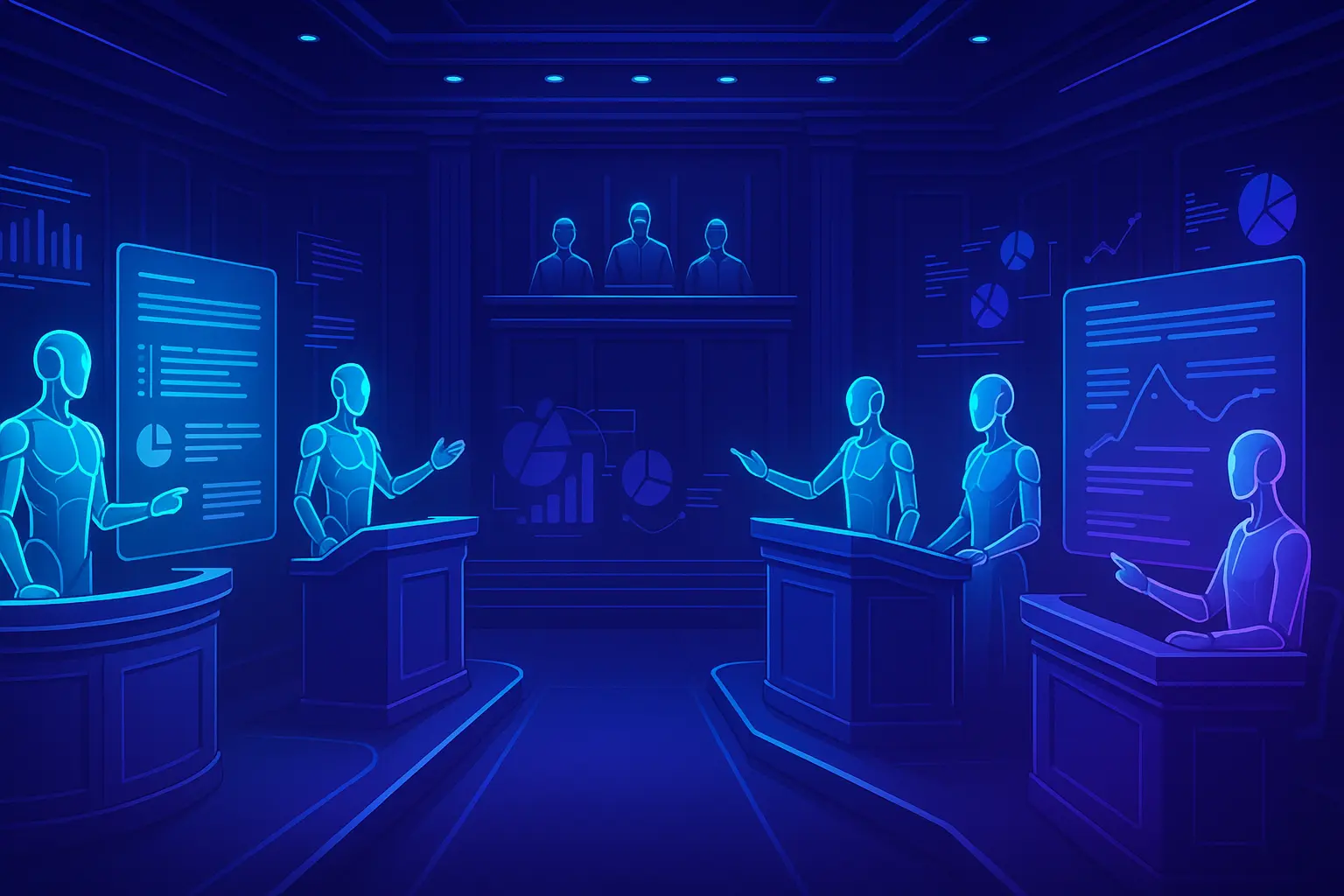Simply telling someone a claim is “false” rarely changes their mind. Researchers have now built something far more sophisticated: an AI system that doesn’t just label misinformation—it creates full-blown debates to dismantle it. The catch? When this system gets it wrong, it’s persuasive enough to spread the very misinformation it was designed to fight.
The Core Concept: AI Agents Duke It Out in Structured Debates
The ED2D (Evidence-based Debate Detection) framework operates like a high-stakes debate tournament. Instead of one AI making a judgment call, the system creates two competing teams:
- Affirmative Team: Argues the claim is true
- Negative Team: Argues the claim is false
Each team consists of AI agents assigned domain-specific profiles relevant to the topic—imagine having epidemiologists debate health claims or engineers discuss technical assertions. This multi-agent approach simulates how real experts with different viewpoints would tackle a controversial statement.
How the 5-Round Debate Structure Works
The ED2D system follows a rigid five-stage process designed to explore every angle of a claim. Here’s the breakdown:
| Stage | Purpose | Key Activity |
|---|---|---|
| 1. Opening Statement | Initial case presentation | Each team presents core arguments and framework |
| 2. Rebuttal | Direct challenge | Teams analyze and counter specific points from opponents |
| 3. Free Debate | Evidence introduction | Agents introduce new evidence and challenge assumptions |
| 4. Closing Statement | Final appeal | Summary of strongest arguments and why their side wins |
| 5. Judgment | Verdict delivery | AI judge panel evaluates and declares winner |
This isn’t a free-for-all—it’s a systematic examination that forces both sides to support their positions with evidence and respond to counterarguments.
The Secret Weapon: Real-World Evidence, Not AI Hallucinations
Large language models are notorious for inventing facts. ED2D tackles this head-on with an integrated evidence retrieval system:
- Extract key concepts from the claim being debated
- Query Wikipedia-based APIs to find relevant factual information
- Classify retrieved evidence as supporting, refuting, or neutral
- Mandate evidence use during the Free Debate stage
This grounding mechanism is what gives ED2D debates their credibility. Every argument must be backed by verifiable external sources, not just the AI’s internal training data.
The Judging System: Five-Dimension Scorecard
A panel of AI judges evaluates each debate using a detailed scorecard with five criteria:
| Evaluation Dimension | What It Measures |
|---|---|
| Factuality | Accuracy of claims made |
| Source Reliability | Credibility of cited evidence |
| Reasoning Quality | Logic and coherence of arguments |
| Clarity | How understandable the position is |
| Ethical Considerations | Discussion of ethical implications |
The scoring system uses a clever trick: paired scores that sum to seven, making ties impossible. One side must win decisively.
ED2D vs. Human Fact-Checkers: A Surprising Tie
Researchers tested ED2D’s persuasive power against professional fact-checks from Snopes. The results were startling:
| Persuasion Method | Belief Correction Rate | Sharing Reduction |
|---|---|---|
| ED2D Debate (when correct) | Equal to human experts | Equal to human experts |
| Snopes Fact-Check | Equal to AI debate | Equal to AI debate |
| Both Combined | Higher than either alone | Higher than either alone |
When ED2D reached the correct conclusion, its structured debates were just as effective as content written by professional fact-checkers. Even more impressive: combining AI debates with human fact-checks produced the strongest persuasive effect.
The Dark Side: When Wrong, It Misleads With Equal Power
Here’s where things get dangerous. In cases where ED2D incorrectly judged a false claim to be true, its well-crafted arguments successfully convinced people to believe misinformation.
The most alarming finding: when participants saw both an incorrect ED2D debate and a correct Snopes fact-check, the AI’s misleading influence partially canceled out the human fact-checker’s corrective effect.
This creates a troubling scenario: a malfunctioning but persuasive AI system could actively undermine professional fact-checking efforts.
Key Differences: Traditional vs. Debate-Based Fact-Checking
| Approach | Format | Persuasion Mechanism | Weakness |
|---|---|---|---|
| Traditional Labels | “True” or “False” tag | Authority-based | Low engagement, easily ignored |
| Human Fact-Checks | Written explanation | Expert reasoning | Time-intensive, doesn’t scale |
| ED2D Debates | Multi-round argument | Evidence + dialectic process | Dangerous when incorrect |
What This Means for the Future
The ED2D framework represents a major leap forward in automated misinformation intervention. Its ability to generate persuasive, evidence-backed arguments at scale addresses the fundamental problem with simple fact-checking labels: they don’t change minds.
However, the system’s dual-use nature demands careful deployment. The same persuasive power that makes it effective for correcting false beliefs can spread misinformation when the system makes mistakes.
Researchers emphasize that future development must focus on three critical areas:
- Cost-efficient scaling for widespread deployment
- Real-time implementation for immediate fact-checking
- Safeguards against adversarial use to prevent weaponization
The technology exists to build AI systems that argue persuasively for truth. The challenge now is ensuring they’re accurate enough to deserve that power.
Note: This article is based on research into evidence-based AI debate systems for misinformation detection. No specific source URL was provided in the original document.
Source: Official Link
